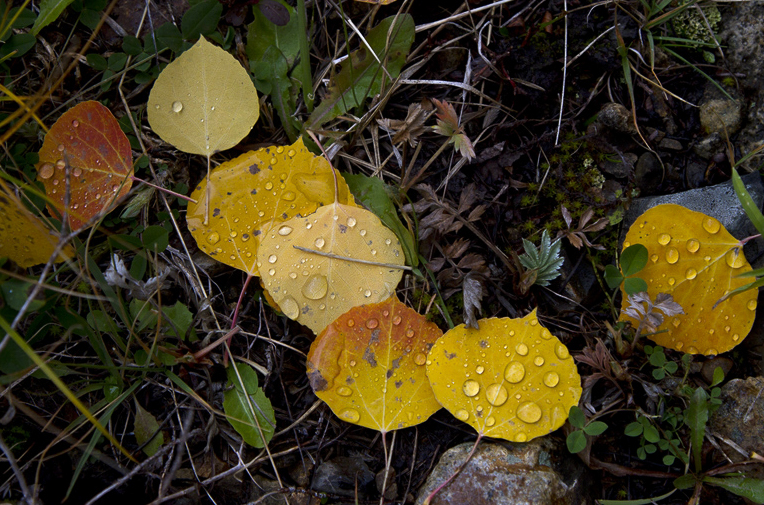Days of mostly sun in the mountains of Colorado when yellow and orange were defined and every leaf posed.
I WENT TO DURANGO THE LAST WEEK OF SEPTEMBER and saw colors that might not exist in Florida where I live. I immediately made plans to get off road and do some shooting. As most locals know, every river and stream, every creek in Colorado has at least a dirt road which follows the water into the mountains. I knew most of the roads from my childhood and learned about others from my brother who still lived nearby.
I spent one day in the mountains west of Durango where the scrub oak (Gambel oak - Quercus gambelii) dominate at lower elevations (5000 – 7500 feet); then aspen and pine take over and continue to above 11,000 feet which is very near to timberline - the elevation above which no trees grow (in Colorado between 11,000 and 12,000 feet). Although I got wonderful images of Aspen I decided to head north toward Silverton for the very large landscapes which were turning yellow.
Colorado, became a state in 1876, 100 years after the founding of the country (thus the moniker Centennial State). Colorado has the highest average elevation of all states. It's soaring mountains, spotted with high elevation lakes and threaded with rivers is the summer and winter vacation choice for tens of thousands of Americans as well as visitors from the rest of the world.
The Southwestern corner of the state is one of the most visited destinations in Colorado. The area is home to the world famous Mesa Verde Indian cliff dwellings, one of the most famous remaining narrow gauge trains, the Purgatory Ski area, plus world class fishing and hunting.
As you would expect summer is very busy with tourists, winter is very busy with skiers and hunters. Spring brings hikers and fishermen. However, May and September, two of the best months in Colorado are the treasures of locals. May brings flowers, warm days and cool evenings. September brings fall colors - a commonly used description for the state is Colorful Colorado. The name may have come from white clouds, blue skies and green timber-lands but is never more appropriate than in September when the leaves change color.
There are domesticated areas in Colorado with a variety of non-native trees which have spectacular fall colors but the true colors are the mountain aspen, scrub oak and water course cottonwoods.
The Quaking Aspen (Populus tremuloidesis which translates as trembling Poplar) is Colorado's only widespread, native, deciduous tree. Outside Silverton I found mountainsides covered in yellow, but the shots I value most are shots of orange Aspen. They were limited in number, probably on their way to becoming brown.
I also found Deer, coyote, squirrels, a few birds and autumn wildflowers. I headed home feeling that Colorado had welcomed this native son generously with local pleasures.
Small beauties
WHY THE COLORS?
If you are interested in why leaves change, I recomment the US Forest Service site. Some of that discussion is summarized here.
Three factors influence autumn leaf color: leaf pigments, length of night, and weather. Length of night may be the trigger for the change. During the growing season, chlorophyll is continually being produced and broken down and leaves appear green. As night length increases, chlorophyll production slows down, stops and the green diminishes. Then carotenoids and anthocyanins that are present in the leaf show their colors – yellows, reds and brown.

